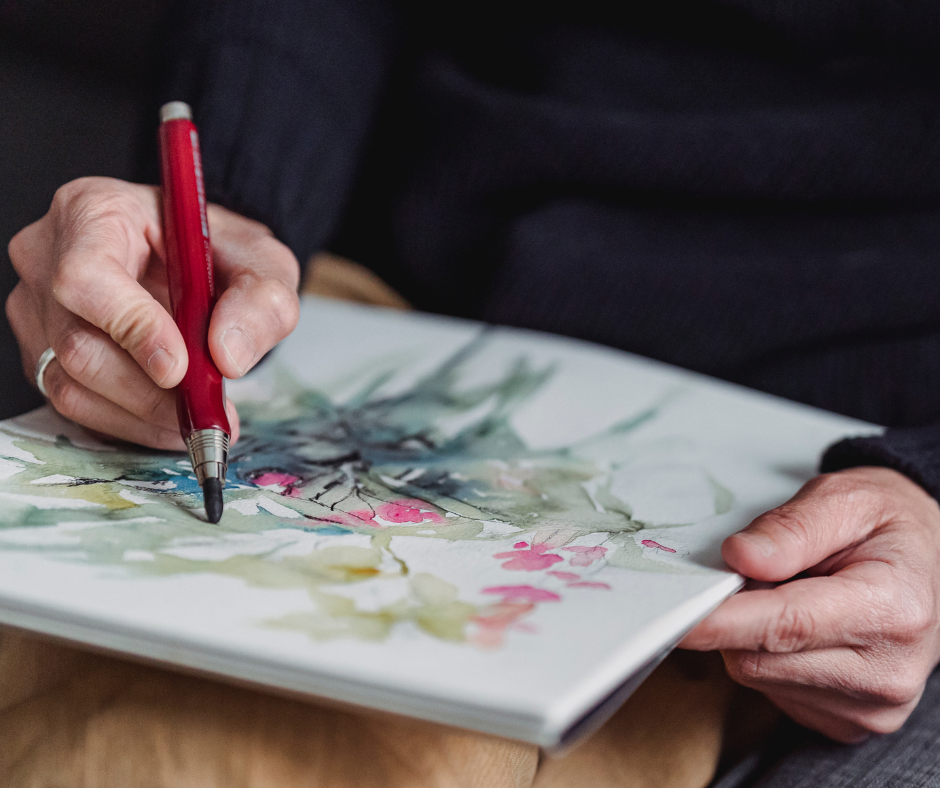Listening to the Parts of You That Panic: A Gentle Introduction to IFS and Anxiety
Wait, What If Your Anxiety Isn’t the Enemy?
You know that moment when you’re lying in bed, everything is quiet — and suddenly, your brain decides to rehearse every awkward thing you’ve ever said in your life? Or when a simple text leaves you spiralling with self-doubt, convinced someone is mad at you? Anxiety shows up fast, loud, and often in confusing ways.
But what if that anxiety wasn’t here to sabotage you?
What if, underneath all that worry and restlessness, there was a younger, more protective part of you — trying (awkwardly, urgently) to keep you safe?
That’s the idea behind Internal Family Systems (IFS): a therapeutic model that doesn’t see anxiety as a flaw to fix, but a voice to understand. And that voice? It usually belongs to a part of you that’s been working overtime for years.

What Is Internal Family Systems (IFS)?
Internal Family Systems (IFS) is a therapeutic model developed by Dr. Richard Schwartz that offers a radically compassionate way of understanding yourself. Instead of viewing the mind as a single, unified personality, IFS sees it as a system of parts — distinct sub-personalities within you that each have their own perspectives, emotions, and roles. These parts aren’t imagined or pathological. They’re real inner experiences that shape how you feel, think, and behave — and most importantly, they’re all trying to help in their own way.
You might notice this intuitively in everyday language:
- “A part of me really wants to go to that party, but another part just wants to stay in bed.”
- “There’s a part of me that still feels like a scared kid.”
- “I hate that I get like this.”
IFS takes that language seriously. It starts with the assumption that all parts are welcome, even the ones you wish you could get rid of — the anxious parts, the angry parts, the ones that shut down or push people away. These aren’t signs of being broken. They’re signals that your internal system is doing its best to adapt, survive, and protect you, often based on past experiences.
Think of your inner world like a community or a team. Some parts are more dominant and vocal (like the perfectionist or the critic), while others might be quiet and withdrawn (like the parts that carry old wounds). IFS doesn’t aim to eliminate these parts — it invites you to get to know them, listen to them, and build a trusting relationship with them.
At the heart of IFS is the concept of the Self — your calm, curious, compassionate core. When you’re in Self, you’re not caught up in the chaos of your inner world. You can respond instead of react. You can listen instead of panic. IFS therapy helps you shift leadership of your inner system from your overworked, protective parts to your grounded Self.

The Three Main Types of Parts in IFS
Understanding these categories can help you begin recognizing what’s happening internally — especially when you're feeling emotionally overwhelmed, anxious, or shut down.
1. Protectors
Protectors are the parts of you that take charge to prevent emotional pain. They come in two flavours: Managers and Firefighters.
- Managers are proactive. They try to control your life to prevent anything painful from happening. These might show up as perfectionism, people-pleasing, hypervigilance, or overthinking. They're the ones planning every detail, trying to prevent rejection or failure.
- Firefighters are reactive. They jump in when emotional pain breaks through the surface and try to douse it quickly — sometimes with impulsive behaviours like binge eating, dissociation, substance use, or emotional outbursts. They're the “shut it down now” team.
Both are trying to protect you, usually from re-experiencing unresolved pain. Their strategies might be messy or feel counterproductive, but their intentions are rooted in care.
2. Exiles
Exiles are the deeply vulnerable parts that carry wounds from the past. These are often younger parts of you that were hurt, shamed, abandoned, or overwhelmed — and at some point, your system decided it was safer to tuck them away.
Exiles often carry:
- Intense sadness or grief
- Shame or worthlessness
- Fear of being hurt again
- Loneliness or longing for connection
They’re “exiled” not because they’re bad, but because they feel like too much to deal with. So your protectors step in to keep them from surfacing. The downside? Those exiles still live inside you, and when they’re triggered — they flood your system.

3. Self
Self is not a part. It’s the core of who you are — your inner leader, when all the noise settles down. In IFS, Self is characterized by qualities like:
- Calm
- Clarity
- Curiosity
- Compassion
- Courage
- Creativity
- Confidence
- Connectedness
When you're in Self, you're not fused with any single emotion or reaction. You're observing and relating, not drowning. You can connect with your anxious or angry parts without becoming them.
The goal of IFS therapy is to help you unblend from your parts so Self can lead with calm authority. That doesn't mean silencing the anxious part or exiling the inner critic — it means building trust with them so they don’t have to work so hard.
What Anxiety Is Trying to Do (Even If It’s Doing It Badly)
In IFS, anxious parts are often protectors — trying to keep you from being hurt like you were in the past. They might sound panicked or harsh, but their intentions are rooted in care. They might say:
“If we don’t plan every detail, something terrible will happen.”
“Don’t get your hopes up. You’ll just be disappointed.”
“Let’s keep replaying that mistake so you don’t make it again.”
It’s like having a nervous little guard dog inside you. It barks a lot, but only because it thinks something bad is coming. You don’t have to kick it out — you just need to let it know you’re listening.
How to Recognize When an Anxious Part Is Taking Over
Not every anxious moment is the same. IFS invites you to notice the flavour of your anxiety. Ask yourself:
Does this anxiety feel young or mature?
Is it trying to get me to do something or stop something?
Does it remind me of an earlier time in life? Am I curious about it — or am I blending with it?
Blending is when a part overwhelms your system and you become it. You’re no longer “feeling anxious,” you are anxiety. The goal in IFS is to unblend — to create enough distance to get curious without judgment.
10 Therapist-Approved Ways to Work With Anxious Parts (Not Against Them)
These are not quick fixes or clever tricks to shut anxiety down. They're invitations — to turn toward your inner world with curiosity, compassion, and consistency. You don’t have to fight your anxiety. You just have to listen differently.

1. Say Hello to the Anxious Part
This might sound strange, but naming and greeting your anxiety out loud is powerful. It breaks the spell of fusion — when you’re totally consumed by anxiety — and instead opens a little bit of space between you and the part. Try pausing for just a few seconds to say, either silently or aloud: “Hi. I see you.” It’s not about fixing or fighting. It’s about beginning a relationship.
- Begin with a simple phrase like “I see you” or “You showed up again — I’m listening.”
- Try journaling a few lines addressed directly to the anxious part.
- Don’t rush into solutions. Just acknowledge it exists.
- Notice if this small act changes how you relate to the feeling in your body.
2. Ask What It’s Trying to Protect You From
Anxiety usually has a job — often one it’s been doing for a long time. Gently ask: “What are you afraid would happen if you didn’t make me feel this way?” Often, the answer is not as dramatic as we fear. It might be trying to keep you from being rejected, embarrassed, or hurt. Even if its methods are harsh, its motivation is care.
- Explore this in writing: “If I didn’t feel anxious right now, what might happen?”
- See if the part is protecting you from something old — like an earlier experience of failure or abandonment.
- Let yourself be surprised. The answer might feel tender or even childlike.
- Affirm to the part: “Thank you for trying to help — I want to understand.”

3. Use Imagery to Separate the Part From You
Visualization can help you “unblend” — to stop becoming the anxious part and instead observe it. Try imagining your anxious part as a character, creature, or even a symbol. Maybe it’s a small, jumpy animal. Maybe it’s a kid with wide eyes and worried hands. You’re not mocking it — you’re making it easier to connect.
- Sketch, draw, or describe what this anxious part might look like.
- Give it a voice and personality — how does it speak? How does it move?
- Try a short meditation where you visualize meeting this part in a safe space.
- Notice if your body softens once it becomes something you can see and relate to.
4. Notice How It Feels in Your Body
Anxious parts don’t just talk — they live in the body. You might feel a lump in your throat, tightness in your chest, or shakiness in your hands. Instead of pushing it away or ignoring it, bring your awareness there. What’s the texture of the feeling? Is it buzzing, sharp, frozen? This helps you locate the part without becoming overwhelmed by it.
- Use slow breath to anchor yourself as you scan your body.
- Say: “I’m noticing anxiety in my [body part], and I’m here with it.”
- Avoid trying to relax it away — just stay in connection with it.
- If safe, place your hand gently over the area and offer warmth.

5. Practice U-Turns
When anxiety flares up in reaction to something external — like a text left on read or a friend canceling — it’s tempting to focus outward. Instead, IFS invites a U-turn. Look inward: “What’s happening inside of me? What part feels activated?” This shift prevents blame and brings the focus back to your own system, where healing can actually happen.
- Try journaling: “This situation made me feel ___, but the part that really got stirred up might be ___.”
- Notice patterns — does this happen in other situations too?
- Name the story the anxious part is telling you.
- Ask if this moment reminds the part of something it’s experienced before.
6. Write a Conversation With the Anxious Part
Dialogue helps you externalize and get to know your anxious part without judgment. Open a notebook and write a back-and-forth between you and the part. Let it speak freely. Then respond from a grounded, Self-led place. You’ll be surprised at what emerges — often, anxious parts just want to be heard.
- Start simply: “What’s going on right now?” and let the part answer.
- Stay curious — don’t argue with its logic.
- Use gentle phrases like “Tell me more” or “That makes sense.”
- End by reassuring the part you’ll stay connected.

7. Find the Age of the Part
Many anxious protectors formed during childhood — often in response to real or perceived danger. Ask: “How old does this part feel?” It might be reacting like your 9-year-old self trying to keep the peace at home, or your teenage self afraid of rejection. Identifying the age softens your judgment and allows for nurturing.
- Imagine what this part looked like at that age — how it dressed, what it feared.
- Picture yourself speaking to it as your adult self — what would you say?
- Try writing from the part’s perspective: “I’m [age], and I feel scared when…”
- Remind the part that the current situation is different than the past.
8. Practice Part Reassurance, Not Suppression
Instead of telling your anxious part to be quiet or go away, try reassuring it. Suppression often makes anxiety louder. Reassurance helps it relax. A simple “Thanks for the warning — I’ve got this now” goes a long way. You’re letting the part know it’s been heard and you’ll take the lead.
- Speak gently and confidently: “I know you’re trying to help.”
- Avoid saying things like “You’re overreacting” or “This is stupid.”
- Offer a plan: “You don’t have to hold this alone — I’ll talk to someone.”
- If helpful, imagine wrapping the part in a soft blanket or holding its hand.

9. Bring in a Calm, Internal Helper
Sometimes the anxious part is so activated it feels too big to face alone. In IFS, you can invite an internal or symbolic “helper” to co-regulate. This could be a wise inner guide, a memory of a pet, a spiritual figure, or even your future Self. Helpers support without fixing — just by being present.
- Visualize the helper sitting with you and the anxious part.
- Let the helper speak: “You’re safe now. I’m with you.”
- Imagine the anxious part slowly leaning into the helper’s support.
- This can be especially helpful before bed, during panic, or after conflict.
10. Let the Part Know You’ll Keep Coming Back
IFS isn’t about a one-time fix. Building trust with anxious parts takes repetition, just like any relationship. Let your part know you’ll return — not only when it’s in distress, but just to check in. This consistency builds internal safety, reducing the part’s need to yell to be heard.
- Schedule small “check-ins” with the part: “How are you doing today?”
- Journal or reflect on the part even during calmer moments.
- Celebrate when the part softens or steps back.
- Say: “You don’t have to be on high alert — I’ve got us now.”

You Don’t Have to Do This Alone
IFS is one of many therapeutic approaches that honours your inner complexity instead of pathologizing it. You’re not “too much.” You’re made up of many brilliant, protective, emotional parts that just want you to feel okay.
At KMA Therapy, we specialize in helping people build relationships with the parts of themselves they’ve spent years avoiding. Whether you’re new to therapy or have been exploring for a while, we’re here to support you with curiosity, compassion, and care.
Your anxious parts aren’t broken.
They’re just waiting for someone to finally hear them.






